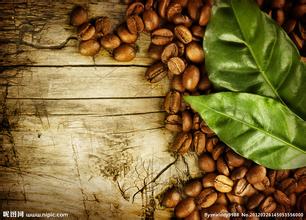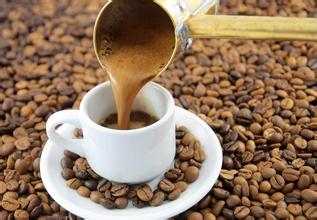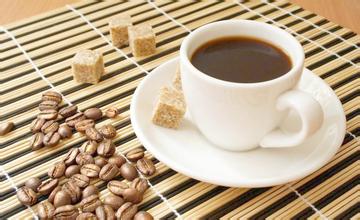Introduction to the characteristics of boutique coffee in Nicaragua's Joy Manor Coffee Flavor
Since July 1927, Augusto. Cesar. Sandino led the people in a guerrilla war against the US occupation, forcing the US military to withdraw in 1933. On February 21, 1934, the Commander of the Nicaraguan National Guard, Anastacio. Somocha. Garcia assassinated Sandino at the behest of US President Roosevelt. He became president in 1936 and established a pro-American "Cordillo" dictatorship for more than 40 years until 1979. In 1964, the Sandinista National Liberation Front (SPLF) was established to carry out a revolutionary struggle against the Somocha dictatorship. Managua, the capital of Nicaragua, is located in the west of the border, located on the south bank of Lake Managua, hence its name. The northwest is 140 kilometers away from the Collinto seaport on the Pacific coast. 55 meters above sea level. It is a Spanish city with beautiful scenery. Because it is located on the east side of the Pacific volcanic active seismic belt, there have been four strong earthquakes in the city in the past 100 years, one of which caused the worst damage to the city in December 1972. The rebuilt Managua has taken many important measures in reducing population density, moving large enterprises to other places, and improving the earthquake-proof capacity of buildings.
Nicaraguan coffee has a wide range of flavor properties. Some coffee has a high alcohol thickness like Mexican coffee, while others have bright acidity like African coffee. Most of the varieties used in Nicaraguan coffee are traditional Tibica, and a few varieties of bourbon and Kaddura are grown.
Generally speaking, Nicaraguan coffee is characterized by calmness but without losing its flavor. Both Full city and Viennese are good choices when baking Nicaraguan coffee. Medium and deep roasting will bring mellow bitterness and excellent balance to Nicaraguan coffee. Nicaragua is located in central Central America, bordering the Pacific Ocean to the west and the Caribbean Sea to the east. The highlands in the north and the coastal plains in the east are part of the Central American volcanic belt. The eastern plain is high-temperature and rainy, with a tropical maritime climate. The suitable climate provides an excellent growth environment for the cultivation of coffee.
High-quality Nicaraguan coffee, grown in the north and middle of the country. Coffee is a pillar industry in Nicaragua, producing nearly 100,000 tons of coffee beans every year. Many people who have tasted Nicaraguan coffee usually think that it is no different from Salvadoran coffee or Honduran coffee. It is full-bodied, smooth and delicate, with a slightly bitter finish, like a faint taste in a wine.
In many countries, coffee production will be seriously affected for political reasons. Nicaraguan coffee industry is no exception. The 1979 revolution forced coffee planters to flee to Miami. A period of indecision followed, when the government considered whether to redistribute land, including many plantations, which led to a shortage of coffee and a decline in production, from more than 1 million bags in the early 1970s to less than 600000 bags in 1990. Now the Government has opened up the coffee industry and private owners have taken control of the market. The best coffee is produced in Sinotega and Novo Segovia in Matagalpa. It has moderate acidity and delicious fragrance. It is located in Dipilto and grows coffee on 10 plots above 1350 meters above sea level. When the current landowner Misael Sauceda Olivera inherited from his father, there were only two plots for planting and development, and then he bought land from his neighbors, which has grown to its present scale. Thanks to the efforts of the manor owner Misael Sauceda Olivera, Tianyi Manor has been shortlisted for many times in COE, while constantly making progress, improving the coffee planting conditions and coffee bean processing mode in the manor. It was still ranked 24th in 2007, rose to the fourth place in 2008, and was in high spirits in 2012. Won the runner-up.
Country: Nicaragua
Planting area: Tianyi Manor

Important Notice :
前街咖啡 FrontStreet Coffee has moved to new addredd:
FrontStreet Coffee Address: 315,Donghua East Road,GuangZhou
Tel:020 38364473
- Prev

Introduction to the characteristics of high-quality coffee beans in the producing area of coffee flavor varieties in Valenford Manor
The Jamaican Blue Mountains-John Crowe Mountains are listed as both natural and cultural heritage, giving the world-famous Blue Mountain Coffee from the region a lingering aftertaste. Jamaican Blue Mountain Coffee refers to coffee beans that grow in the Blue Mountain area (more than 1000 meters high) east of Kingston, Jamaica. Original imported ㊣ Jamaica Blue Mountain Coffee beans are only produced in the Blue Mountains, the legal production of Blue Mountain Coffee.
- Next

Introduction to the characteristics of Flavor Coffee varieties in Los Congo Manor
The Nicaraguan national flag was launched on August 27th, 1971. the national flag is rectangular and the ratio of length to width is 5:3. The flag is made up of three parallel rectangles from top to bottom. The national emblem is painted in the central government. The color of the national flag comes from the original Central American federal flag, which also symbolizes the country's geographical location between the Pacific Ocean and the Caribbean Sea. On August 18, 1986, the Nicaraguan Constitution was established by the National Assembly.
Related
- Does Rose Summer choose Blue, Green or Red? Detailed explanation of Rose Summer Coffee plots and Classification in Panamanian Jade Manor
- What is the difference between the origin, producing area, processing plant, cooperative and manor of coffee beans?
- How fine does the espresso powder fit? how to grind the espresso?
- Sca coffee roasting degree color card coffee roasting degree 8 roasting color values what do you mean?
- The practice of lattes: how to make lattes at home
- Introduction to Indonesian Fine Coffee beans-- Java Coffee producing area of Indonesian Arabica Coffee
- How much will the flavor of light and medium roasted rose summer be expressed? What baking level is rose summer suitable for?
- Introduction to the characteristics of washing, sun-drying or wet-planing coffee commonly used in Mantenin, Indonesia
- Price characteristics of Arabica Coffee Bean Starbucks introduction to Manning Coffee Bean Taste producing area Variety Manor
- What is the authentic Yega flavor? What are the flavor characteristics of the really excellent Yejasuffi coffee beans?

